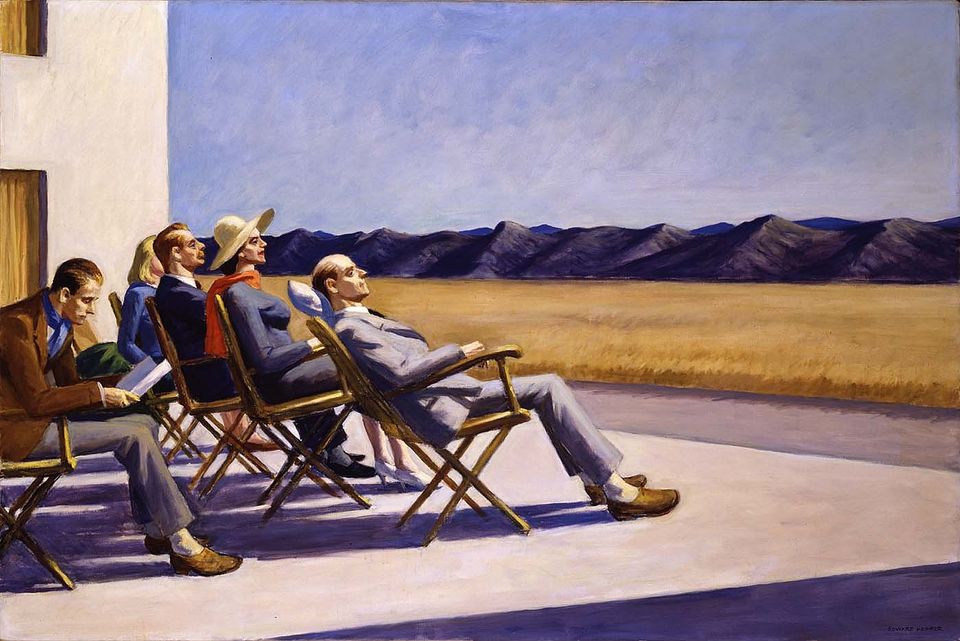
I nearly forgot about the recent NPR interview with John Updike, author of Still Looking, a collection of essays on artists, along with scores of novels and literary essays. Updike always emphasizes the fact that he writes about art as an enthusiastic amateur; there's little in the way of scholarship or truly revealing analysis in his work. But a better wordsmith is hard to come by. Consider just a few telling quotes from the interview:
- On Edward Hopper: "He always tells us something about the human mystery, about the sense that being a human being is a problem, is interesting, is strange even."
- On Jackson Pollock: "[His work] is an ultimate of a kind. You can't out-Pollock Pollock. There have been very few Pollock imitators, because he did it."
- On Andy Warhol: "If you read his statements, they sound ironic. . . . He said, 'If you want to know all about Andy Warhol, just look at the surface. There is nothing behind it.' That is facing the facts of modern existence. There's an awful lot of surface existence with nothing behind it."
- On Pennsylvania: "He was a man from a humble background, and a hard worker. I kind of feel a soulmate in Andy Warhol." [NPR's Susan Stamberg: "It's just because he's from Pennsylvania."] "That's right, he's from Pennsylvania, the great unironic state. In Pennsylvania, we don't go in for irony, and we take everything very seriously."
Not sure I buy that about Pennsylvania—any state for which Cheez Whiz is in the running for official condiment can't be too serious. But his response to Hopper is spot on. Hopper draws from the great looming mystery, a wellspring of creepiness and insecurity, just under the surface of a superficial and superficially courageous era.
Updike also comments on the differences between writing and painting. This is interesting to me. Updike suggests that that painting simply happens, whereas writing, as a craft, introduces greater compromise and tedium. It's true that the cultivation of writers involves different norms than that of artists: A writer is told all along that he is obligated to his reader and that if a determined readership can't find his meaning, he's to blame. That's a value less circulated among visual artists.
Maybe the grass is always greener for the other genre. But the field of visual art is so expansive, it makes a bad case for comparison. Perhaps writers, with their daily warmups and cooldowns, envy artists working in certain modes that seem to require fewer color tests or sketches. But, then, take an artist like Tom Friedman, who must never really stop picking up pieces of things for his sculptures—surely nobody wants his job.


















